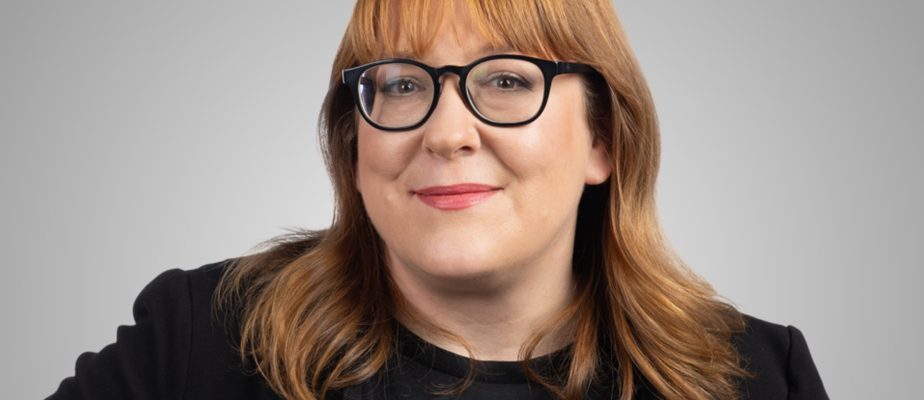In addition to her activities as a producer, Tanya Lapointe, who is also Denis Villeneuve’s partner, designed the beautiful books which explain the colossal work carried out on the filmmaker’s films since Arrival.
If you want to extend the magic of Dune, which is currently a hit in cinemas, get your hands on The art and soul of Dune which I often like to leaf through. These are two heavy volumes (since the film has two parts) published by Hachette. Superb images, behind-the-scenes secrets, interviews with the artisans, we can say that these books are collector’s items and that we learn lots of things, how every detail in each of the shots of this film was thought out, right down to the slightest inscription on the objects.
These books, according to Tanya Lapointe, are a bit of an extension of her former job as a cultural journalist at Radio-Canada.
-

PHOTO DOMINICK GRAVEL, THE PRESS
The art and soul of Dune
-

PHOTO DOMINICK GRAVEL, THE PRESS
The art and soul of Dune
-

PHOTO DOMINICK GRAVEL, THE PRESS
The art and soul of Dune
-

PHOTO DOMINICK GRAVEL, THE PRESS
The art and soul of Dune
-

PHOTO DOMINICK GRAVEL, THE PRESS
The art and soul of Dune
1/5
“When I was on the set of Blade Runner 2049I had access to a lot of information, and I was learning,” she confided in an interview in Montreal during the release of Dune: Part Two. “It seems like with each book, it’s a way for me to share this experience with the person I was 10 years ago, to tell the story of how this magic happens. We try to understand the chaos of life by giving it order. »

PHOTO DOMINICK GRAVEL, LA PRESSE ARCHIVES
Tanya Lapointe and Denis Villeneuve on the red carpet of the Montreal premiere of Dune: Part Two
Tanya Lapointe is herself a reader of books on cinema, she cites as an example The Jaws Log, by Carl Gottlieb, which was filled with on-set anecdotes, like the fake shark that was always sinking or the actor who got sprayed by a skunk. “Despite my deepest desire to make this accessible, I think I will never be able to completely translate this adventure,” she says, “and perhaps one day I will write a book that will be less based on images and more on human experience. »
For about five years, she was immersed in the world of Dune transposed to the cinema by Denis Villeneuve and in particular his artistic director, Patrice Vermette. “It is without a doubt the most memorable and enriching professional experience of my life,” she believes. I think Denis and I developed with Dune a professional and creative symbiosis, I was able to better accompany the films and support the teams. It’s fun to see the love that people had for this set, even when we were in conditions that weren’t always easy. We were all going through this together, and there was a solidarity that I still feel now. »
What is it like to work with your partner? “Life and work are inseparable,” she says. But we have a common passion and we experience creativity every day. »
I find that with Dune: Part Two, in our collaboration and our relationship, everything has become stronger. We experience the same moments of euphoria and exhaustion, we have become more united in the process.
Tanya Lapointe, about her work with Denis Villeneuve

PHOTO DOMINICK GRAVEL, LA PRESSE ARCHIVES
Patrice Vermette, Tanya Lapointe and Denis Villeneuve
Tanya Lapointe’s role as producer is, in a way, to take the director’s vision as far as possible, while keeping her feet on the ground. “Yes, I work to carry Denis’ vision, but I work first and foremost for the film,” she specifies, adding that what fascinates her most about Denis Villeneuve is the extent to which he possesses his universe in a precise way. It seems that for the ride of the sandworm, he himself decided the posture that the actors should have on the creature. “I say that the actors went to the school of the ride of verses by Denis Villeneuve,” she notes with a smile. In a photo, we see him on the worm, and it’s Paul Atréides! »
In Dune, the Bene Gesserit is a matriarchal order that has decided the fate of humanity in the shadows for centuries. Shouldn’t she be a bit Bene Gesserit as a producer? This makes her burst out laughing. ” Absolutely ! It’s funny, because we are four main producers, and sometimes Denis would say, seeing me and the producer Mary Parent, “the Bene Gesserit operate on the sly”…
During my interview with Denis Villeneuve, he explained that at the very beginning of the project, when he started writing the screenplay with Eric Roth, the gateway to Frank Herbert’s novel was, according to him, the women. “We had to enter the femininity of the novel through the Bene Gesserit,” he said. This idea of a matriarchal movement that uses religion as an instrument of manipulation to dominate political power, I found that there was something so powerful in this idea, and the adaptation is completely structured on this aspect of the novel. »
It is true that, even if the evolution of Paul Atreides is at the heart of the story, the female characters of Dune (Jessica, Chani, Reverend Mother Mohiam, Irulan, Lady Fenring, Alia) are numerous and everywhere. I would also say that the disturbing Jessica (Rebecca Ferguson) is the character who impressed me the most in Dune: Part Two. ” I read again The Messiah of Dune [qui fera l’objet du troisième film de la série], and it starts with Chani serving Paul, massaging his feet, says Tanya Lapointe. We agree that this will not exist in a Denis Villeneuve film! He transformed the characters by giving them strength. »

The Art and Soul of Dune – Part Two
Hatchet
240 pages
